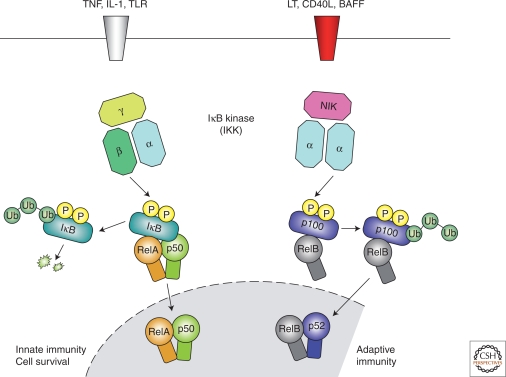Figure 1.
Canonical and alternative NF-κB pathways. This diagram illustrates the canonical and alternative pathways for NF-κB activation. The canonical pathway is triggered by TLRs and proinflammatory cytokines such as TNFα and IL-1, leading to activation of RelA that regulates expression of proinflammatory and cell survival genes. The alternative NF-κB pathway is activated by LT β, CD40L, BAFF, and RANKL, but not TNFα, and results in activation of RelB/p52 complexes. Activation of the alternative pathway regulates genes required for lymph-organogenesis and B-cell activation. These pathways are characterized by the differential requirement for IKK subunits. IKKβ regulates activation of the canonical pathway through phosphorylation of IκBs and requires the IKKγ subunit but not IKKα, whereas IKKα is required for activation of the alternative pathway through the phosphorylation and processing of p100, the precursor for p52, but this is independent of both IKKβ and IKKγ.

